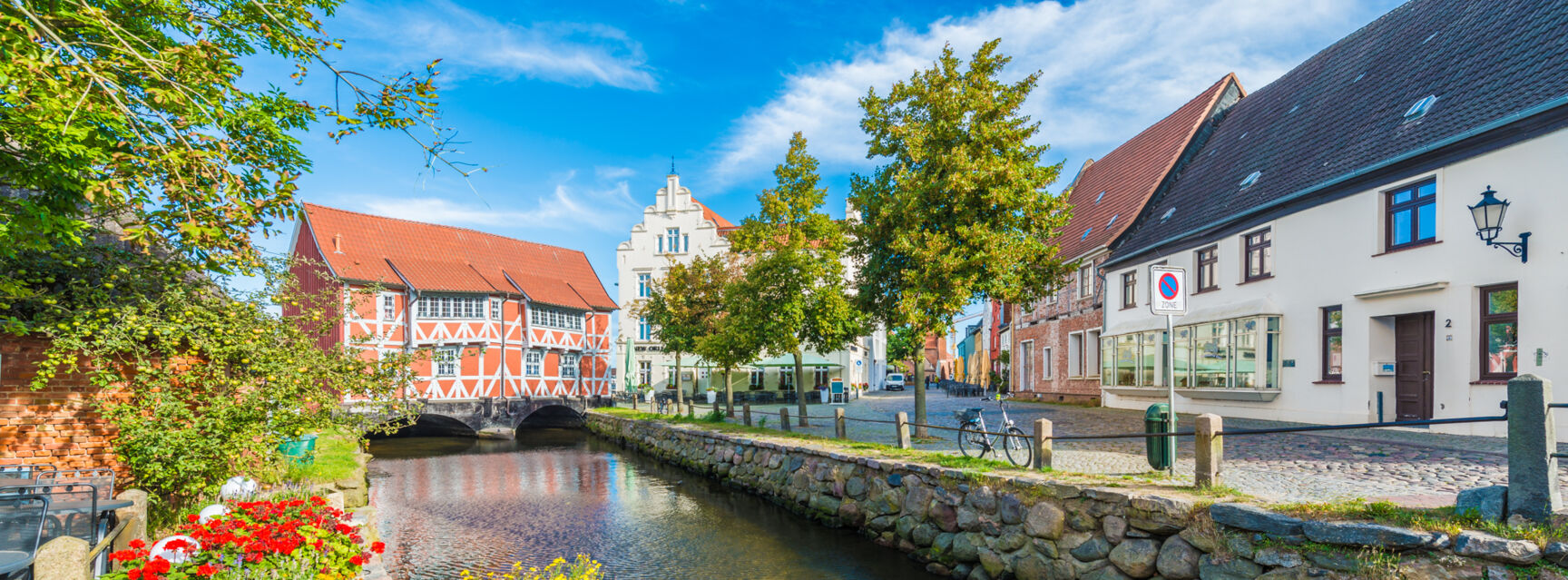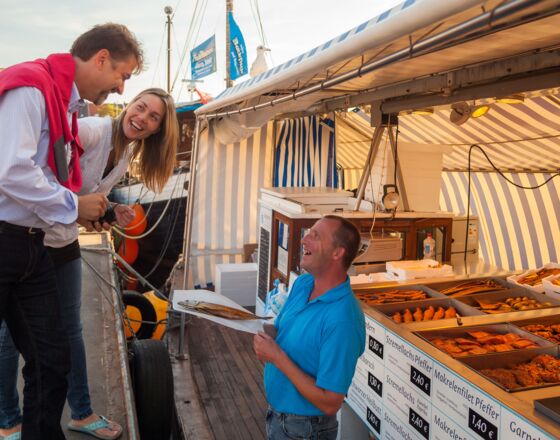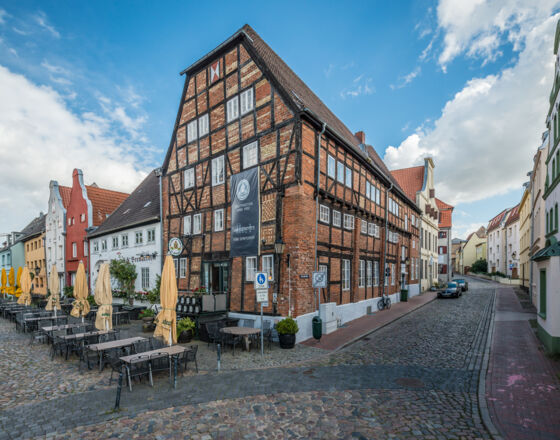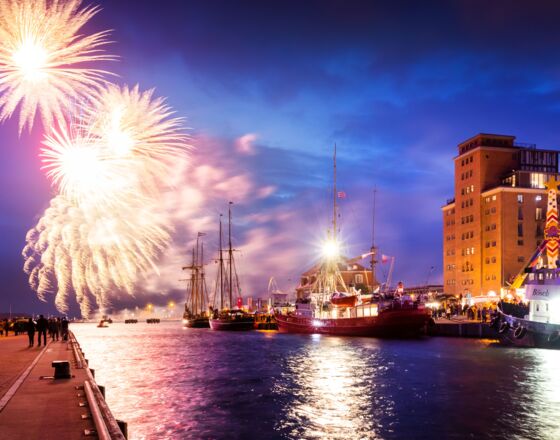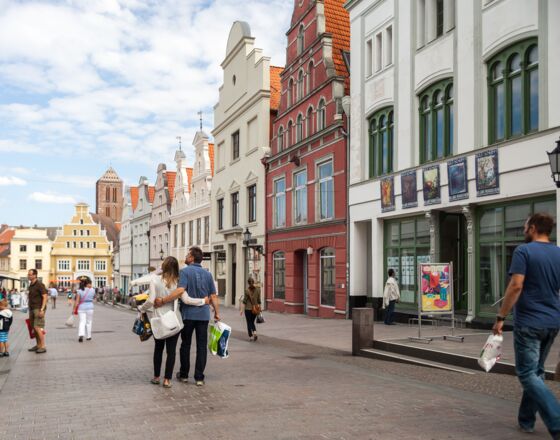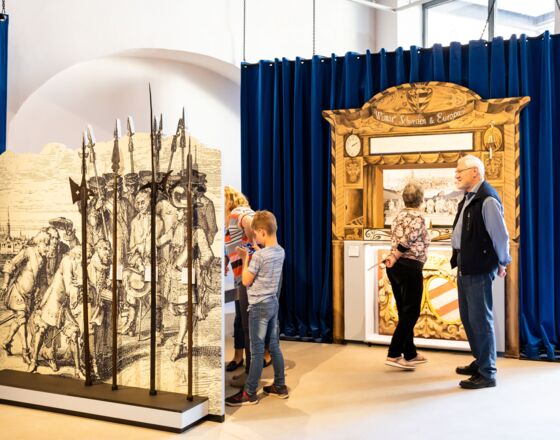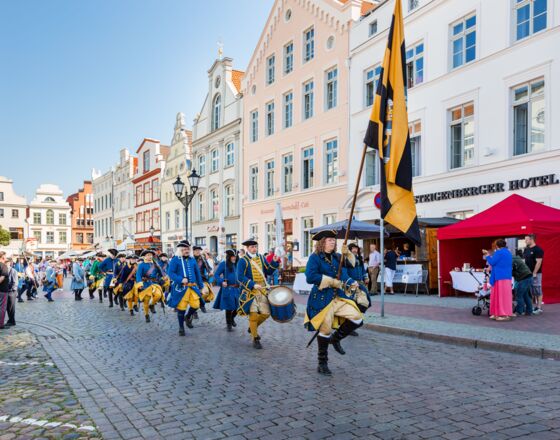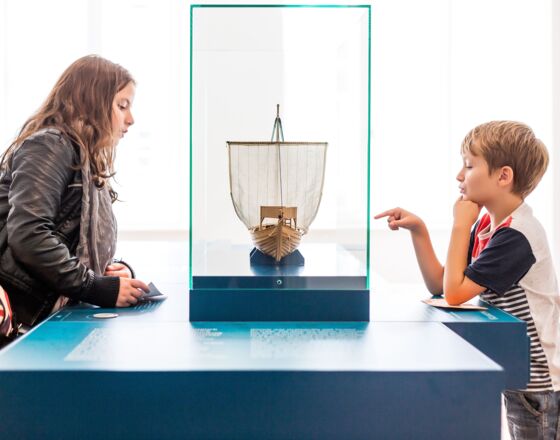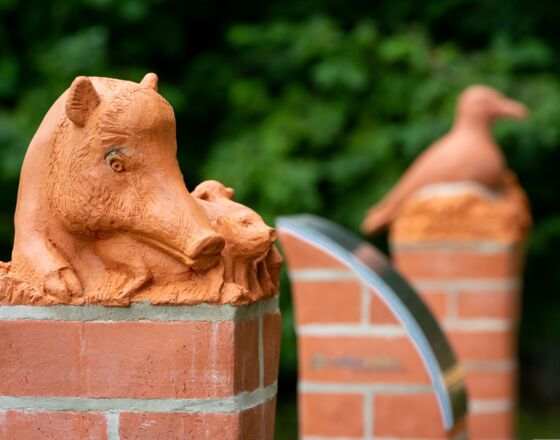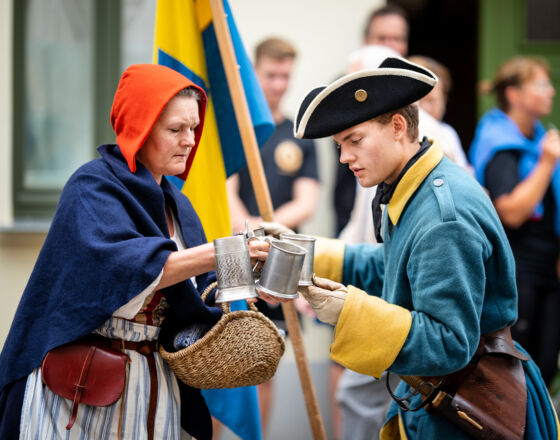Highlights
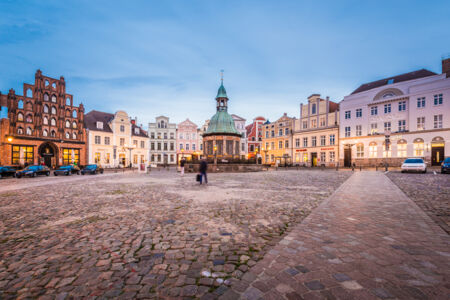
Market square and Town Hall
With its 10,000 m² surface area the market square is one of the largest in Northern Germany. The Town Hall is situated on the north side of the square. It was reconstructed in the classical style between 1817 and 1819 in accordance with plans by the court architect Johann Georg Barca of Ludwigslust. The ‘Alter Schwede’ was built around 1380. In the Middle Ages there were residential and business premises on the ground floor, and the first floor was used as storage space. It was not until 1878, when a catering establishment moved in, that the building was given the name ‘Alter Schwede’ in remembrance of Wismar’s Swedish period from 1648 to 1803.
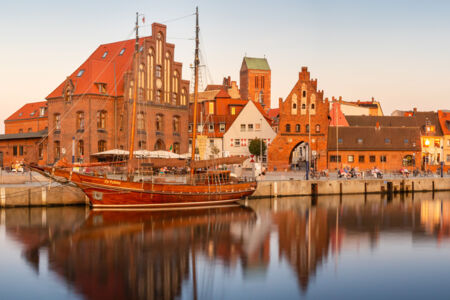
Old harbour and the Poeler cog
For centuries, Wismar has lived from and with its harbour, which extends far into the city. In the past, goods were loaded at the harbour that travelled for weeks across the Baltic Sea, but today the Old Harbour with its promenade invites visitors to linger and stroll. The Poeler Kogge is also moored directly in the harbour. It is a faithful replica of a Hanseatic cog. Round trips in the Wismar Bay or to Lübeck can be booked individually. Meetings or weddings are also possible on the cog.
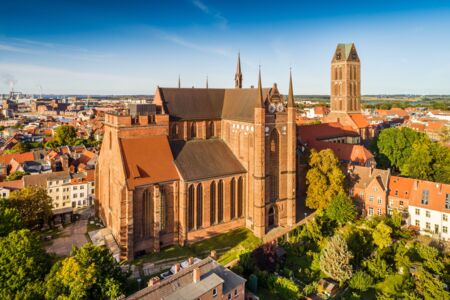
Church of St. George
The Church of St. George is one of the three main churches in Wismar and is a magnificent architectural monument to the North German red brick Gothic style. At one time it was the church of the craftsmen and tradesmen. The origins of the Church of St. George lie in the first half of the 13th century. Over centuries of construction work, the church was altered many times and in 1594 it finally reached completion. During the Second World War, the church was seriously damaged but re-opened in 2010. Concerts and exhibitions take place here regularly. The observation deck allows a unique view over the old town and the harbour.
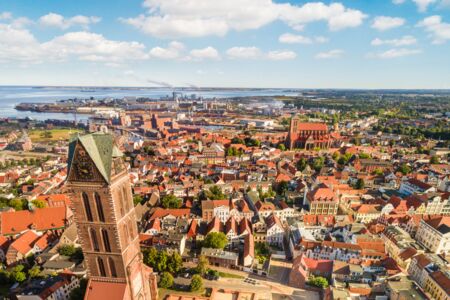
St. Mary's
The 80 metre high tower of the Church of St. Mary is a landmark of Wismar. The nave was damaged in the Second World War and demolished in 1960. Up until that time it was reputed to be one of the most beautiful brick churches in Northern Germany. The former municipal church was probably built in the first half of the 13th century. At the beginning of the 14th century a second church was built over the existing one, and it was twice as large and twice as tall as the old one. The church tower of St. Mary offers a wonderful view. During a guided tour of the tower guests will learn everything there is to know about the church.
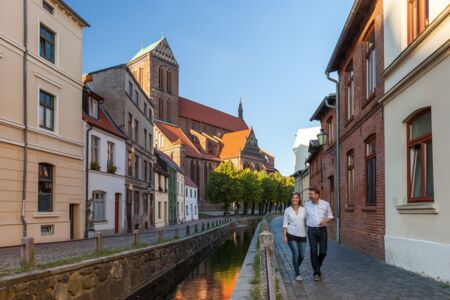
St. Nicholas Church
The 37 metre high central nave is the fourth-highest church nave in Germany. Construction began on the church that we can see today in the 14th century. Originally the tower had a slender ridge turret which fell victim to a hurricane in 1703. The collapse of the turret caused large portions of the interior to be destroyed, these were later replaced in the baroque style. St. Nicholas’ was the church of seamen and travelers.
Contact
Tourist-Information Wismar
Lübsche Straße 23a
D-23966 Wismar
Tel.: +49 3841 19433
Email: touristinfo@wismar.de
Travel options
By car: A20 (Bad Segeberg - Wismar – Stettin), A14 (Wismar – Schwerin), B106 (Wismar - Schwerin – Ludwigslust), B105 (Lübeck - Wismar - Rostock – Greifswald)
By plane: Airport Hamburg, Airport Lübeck, Airport Rostock-Laage
By train: Wismar is connected to all major cities in Germany like Hamburg, Schwerin or Rostock

